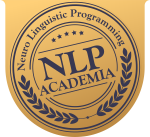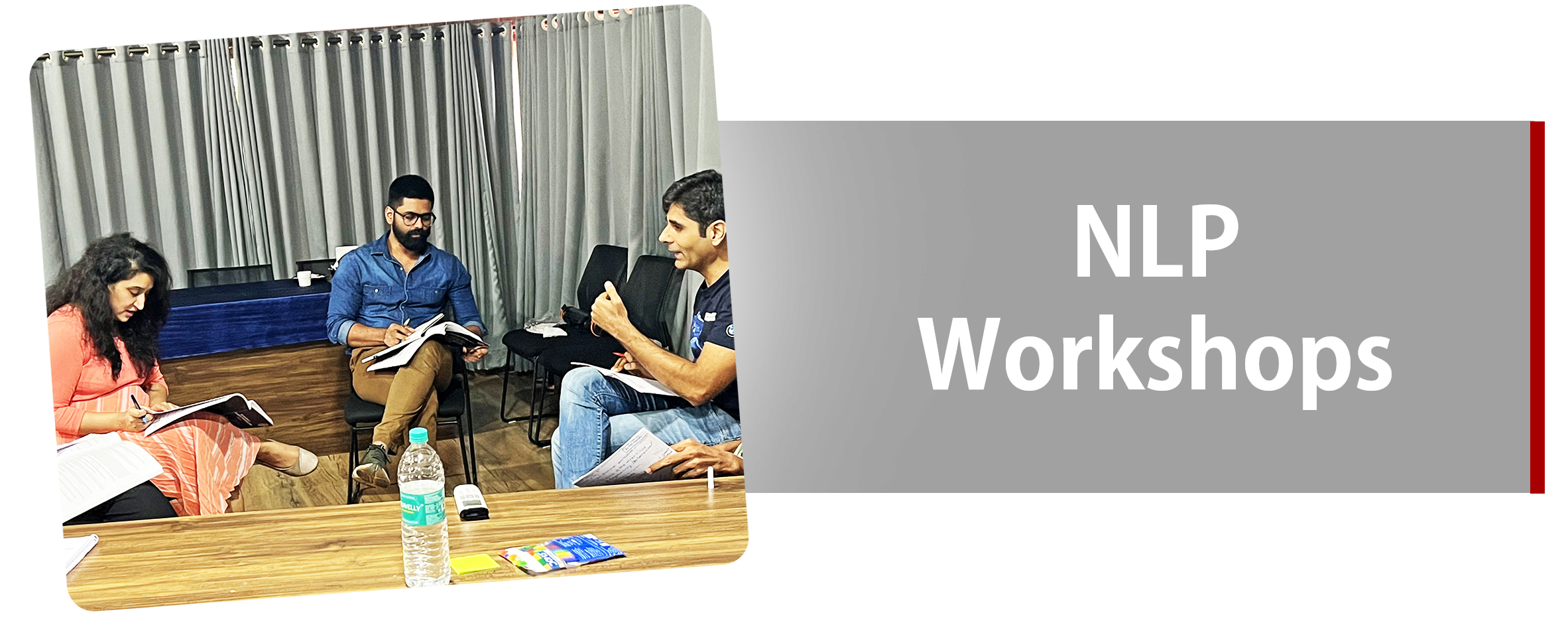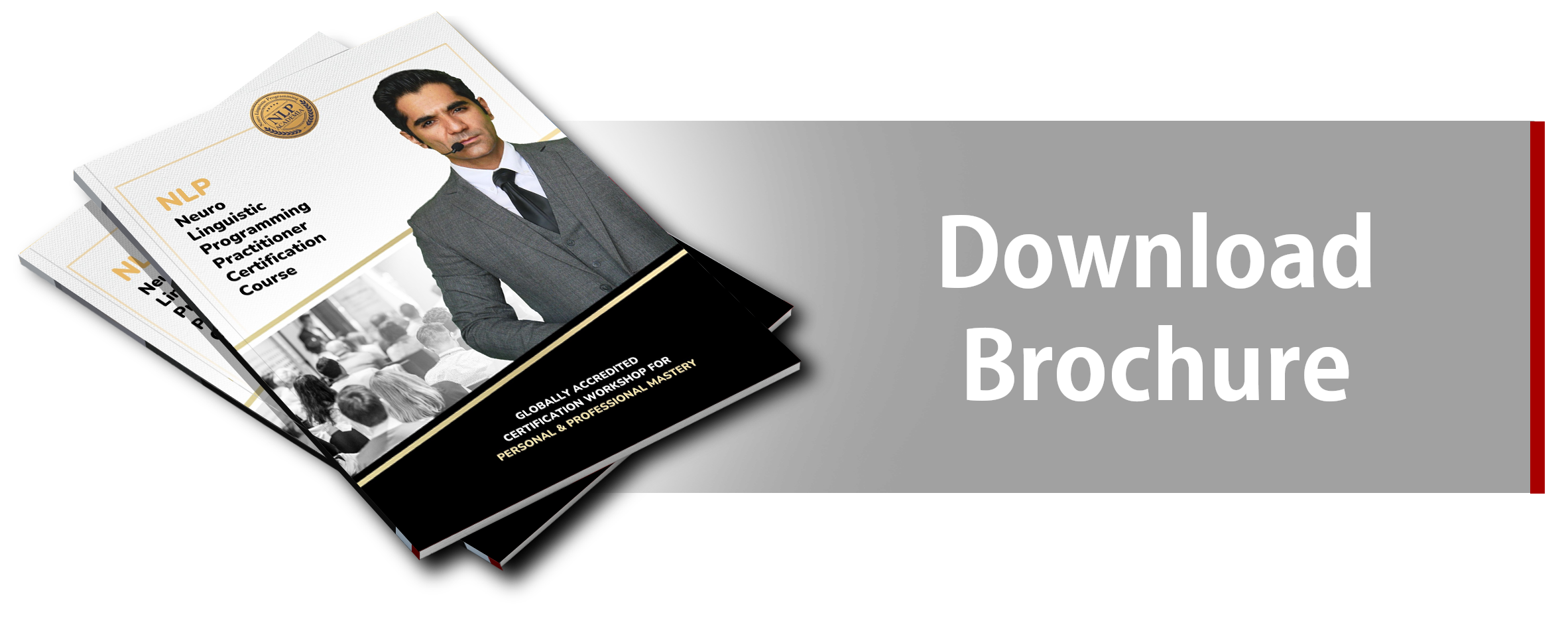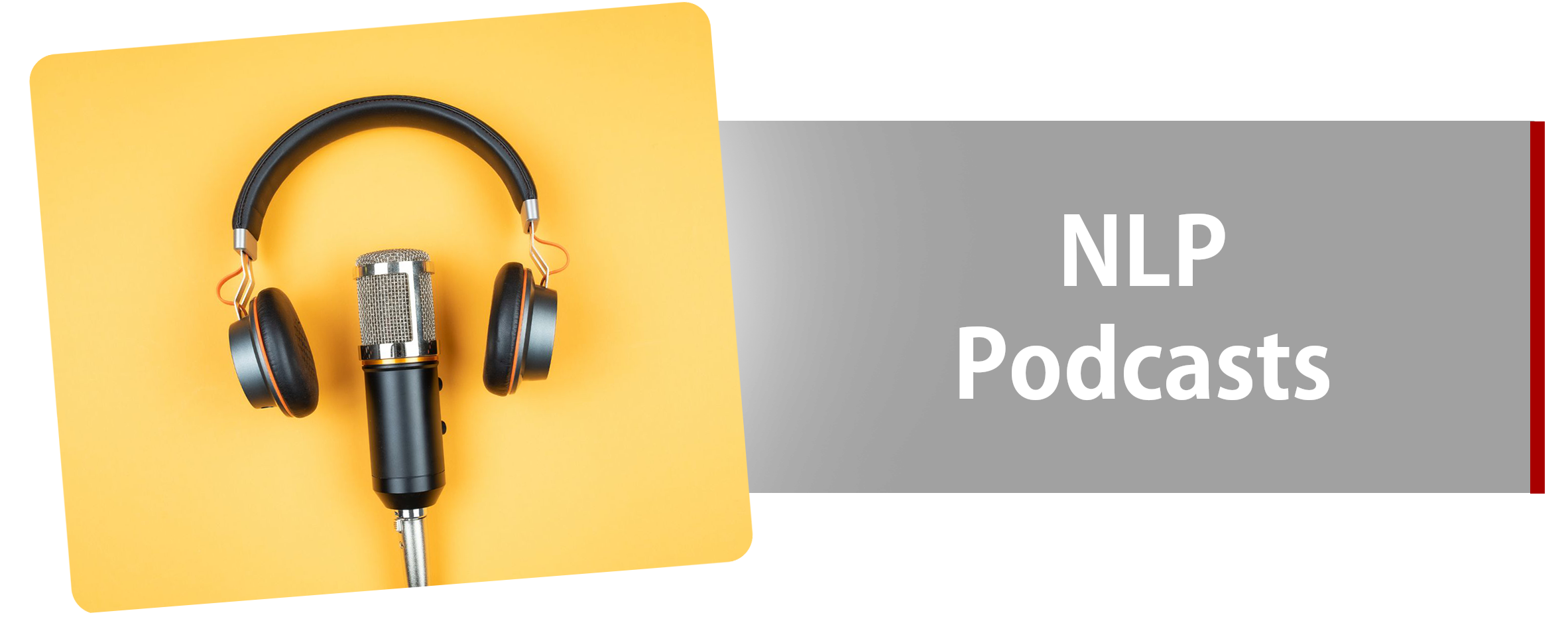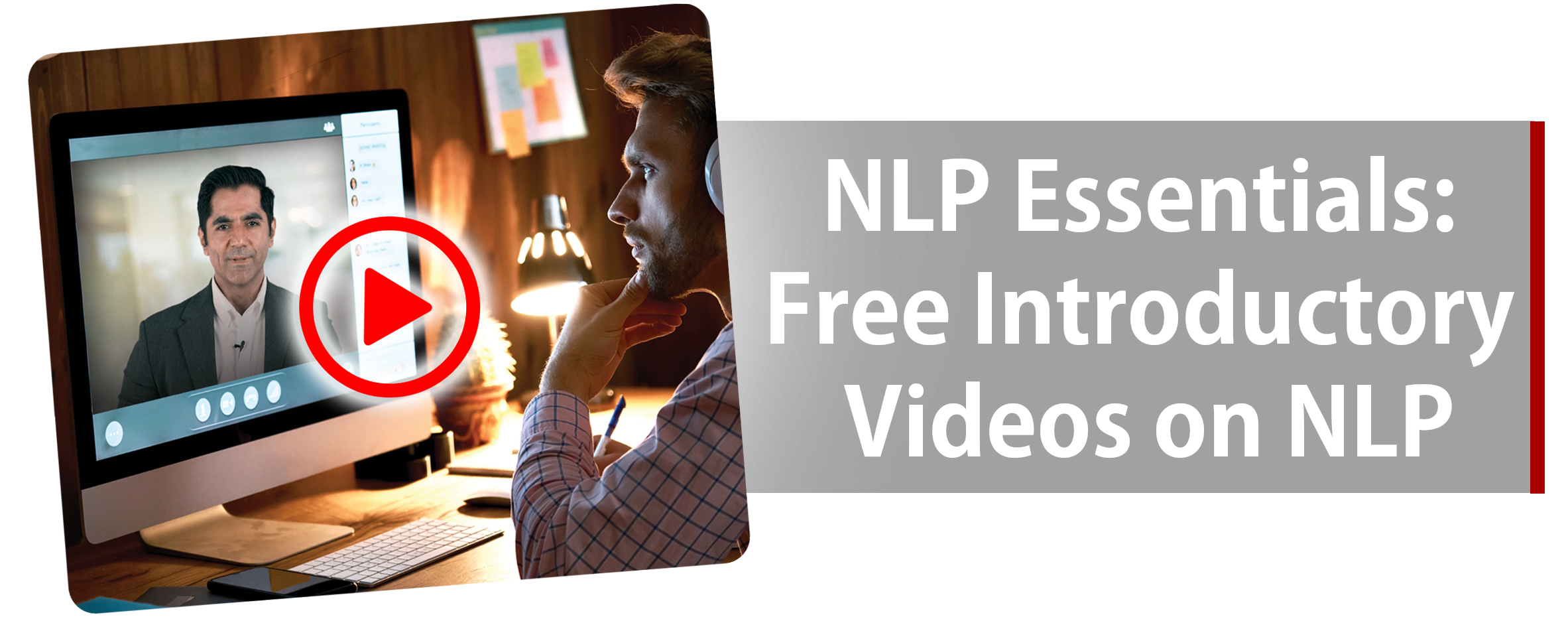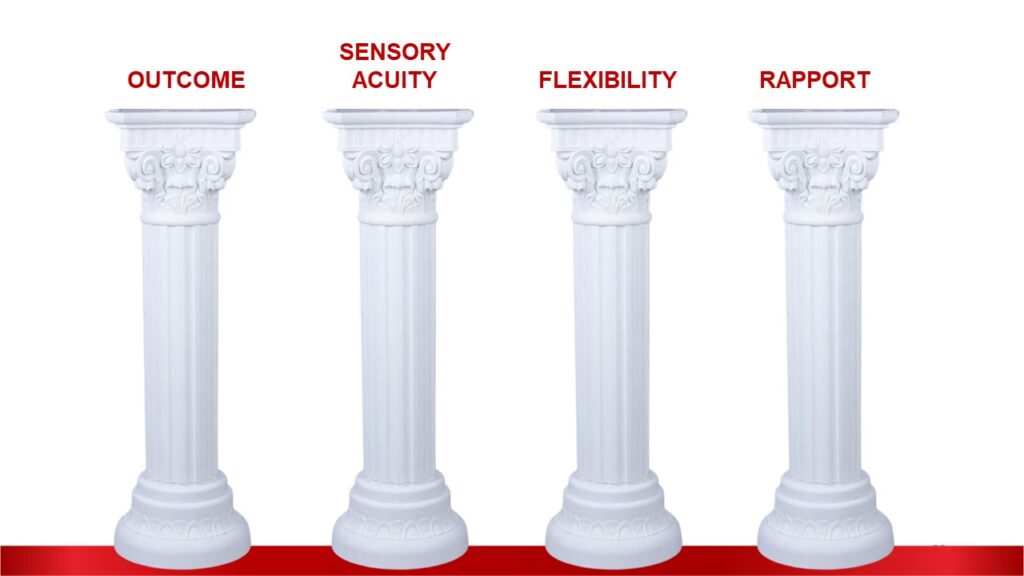
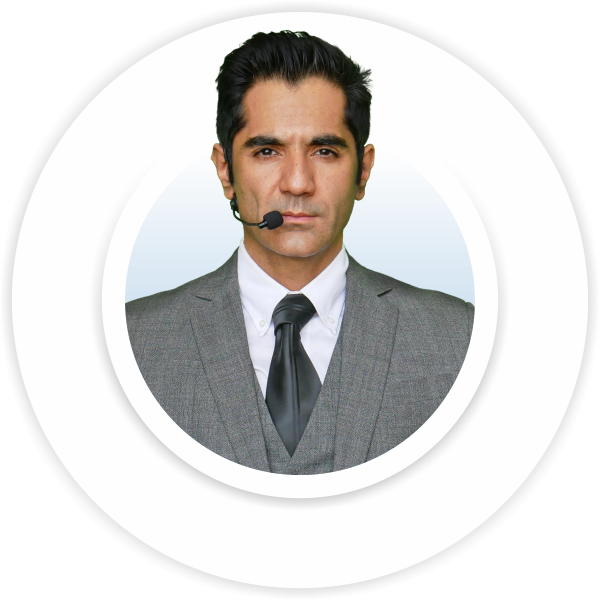
Ravi Bodani / October 17, 2024
The 4 Pillars of NLP: How to Achieve Your Goals Faster and With Confidence
Ever wondered how some people always seem to hit their targets effortlessly, while others struggle to stay on track?
The secret might lie in their mindset-and NLP (Neuro-Linguistic Programming) offers the perfect blueprint for mastering that mindset. But what exactly does that entail?
Enter the Four Pillars of NLP, a powerful framework designed to sharpen your focus, enhance your communication, and boost your chances of success in any situation.
These pillars-Outcome Orientation, Sensory Acuity, Behavioral Flexibility, and Rapport Building-are the foundation for achieving your goals more quickly and confidently.
Here’s how each one can transform your personal and professional life:
1. Outcome Orientation: Start With a Clear Target 🎯
Imagine setting out on a journey without knowing your destination. Sounds confusing, right? That’s exactly what happens when we approach our goals without clarity.
Outcome Orientation ensures that you know exactly what you want. It’s more than just having a vague goal-it’s about defining the specifics. Instead of saying, “I want to exercise tomorrow,” transform that into:
“I’ll work out for 60 minutes tomorrow and burn 800 calories, which I’ll track on my fitness watch.”
By adding detail, you create a roadmap to your goal, giving yourself a clear action plan. The next time you’re setting a target-whether it’s a workout, a business objective, or even planning a meeting-make sure to sharpen that goal into an outcome you can measure.
Actionable Tip: Set a clear outcome for your next task. Write down what you want to achieve, how you’ll measure success, and the steps to get there.
2. Sensory Acuity: Fine-Tune Your Feedback Radar 🔍
What if you could pick up on the subtle signs that indicate whether you’re on track or need to course-correct?
That’s where Sensory Acuity comes in-it’s the art of honing your observation skills to gather real-time feedback from your environment.
Say you’ve set your 60-minute workout goal. Fifteen minutes in, you check your progress-are you burning calories at the right pace? If not, it’s time to adjust.
In communication, Sensory Acuity is crucial. Studies suggest that 93% of communication is non-verbal.
So, whether you’re in a negotiation or giving a presentation, paying attention to others’ body language, facial expressions, and tone of voice can provide valuable insights into how your message is being received.
Actionable Tip: During your next conversation, pay close attention to non-verbal cues like body language and facial expressions. Are they aligning with the words being spoken?
3. Behavioral Flexibility: Adapt and Thrive 🌀
Imagine you’ve set your goal, received feedback, and realize you’re not on track. What now?
Most people would keep pushing forward with the same plan, but NLP encourages a different approach: Behavioral Flexibility.
If something isn’t working, change your approach. In our workout example, if you realize you’re not burning enough calories, maybe it’s time to switch up the intensity or try a new exercise.
This applies to communication and problem-solving too.
If your current strategy isn’t yielding the desired results, try something new. Successful people don’t cling to a failing plan-they adapt.
Actionable Tip: Next time you face an obstacle, ask yourself, “What can I do differently?” and experiment with new strategies until you find one that works.
4. Rapport Building: Connect and Influence 🤝
Here’s a truth bomb: Without Rapport, even the best ideas can fall flat. In NLP, rapport is the gateway to effective communication and influence.
It’s the invisible bridge that connects people, making them feel understood and valued.
Think of rapport as the Wi-Fi signal between two devices.
When the signal is strong, information flows smoothly. But when it’s weak, misunderstandings and miscommunication occur.
Building rapport is about creating that strong connection, whether you’re leading a team, negotiating a deal, or simply having a meaningful conversation with a friend.
Actionable Tip: To build rapport, mirror the other person’s body language or tone of voice subtly. This helps create a subconscious sense of familiarity and connection.
Why These Pillars Matter in Everyday Life 🌟
The beauty of NLP’s Four Pillars is that they aren’t just abstract concepts; they are practical tools you can apply to everyday challenges.
- Leading a meeting? Be clear on the desired outcome, stay attuned to the room’s energy, adapt if needed, and build rapport with your team.
- Personal growth? Set a specific goal, observe your progress, change your approach when necessary, and foster meaningful relationships to support your journey.
By embracing these pillars, you not only improve your chances of success, but you also gain the attitude of a winning mindset-a mindset that enables you to face challenges with confidence and clarity.
Ready to Apply the 4 Pillars of NLP to Your Life? 🚀
The real magic happens when you take these concepts and put them into practice. What’s the next big goal you’re working on?
Comment below with how you’ll apply Outcome Orientation, Sensory Acuity, Behavioral Flexibility, or Rapport Building to achieve it.
And don’t forget-share this blog if you think it could help others unlock their potential, too. Let’s spread the power of NLP and help each other reach new heights!
Start Your NLP Journey Today!
Are you ready to unlock your hidden potential?
Dive into the world of NLP and discover how it can transform your life.
